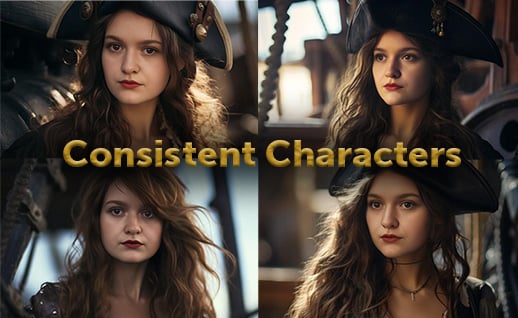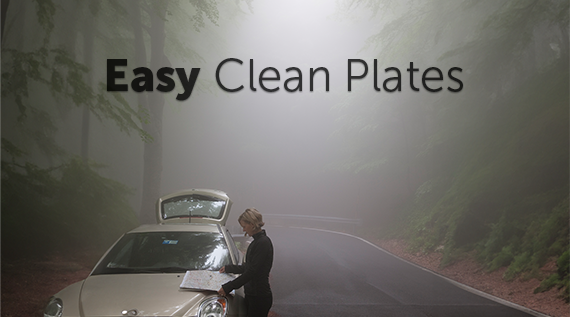Stock footage has become an invaluable resource for content creators, offering a vast library of visuals to enhance their projects. The world of stock footage licensing can often seem like a black box, leaving many with questions about usage rights, restrictions, and legal considerations.
In this blog post, we'll dive into the intricacies of stock footage licensing, shedding light on the key aspects that every content creator should understand. By gaining a better understanding of licensing and rights, you can navigate the stock footage landscape confidently and avoid any legal pitfalls.
What is Stock Footage Licensing?
Exploring the Concept of Stock Footage and Licensing
Stock footage refers to pre-recorded video clips that are available for licensing to be used in various visual projects such as films, documentaries, commercials, and online content. These clips are captured by professional videographers and cinematographers who make them available for purchase through stock footage agencies or platforms.
Stock footage licensing involves the legal framework that governs the use of these video clips. Content creators can acquire the rights to use stock footage by obtaining a license from the stock footage provider. This license grants specific permissions and outlines the terms and conditions for the usage of the footage.
Types of Stock Footage Licenses
There are primarily two types of stock footage licenses:
-
Royalty-Free License: A royalty-free license allows content creators to use the stock footage multiple times without paying additional fees. Once the license is obtained, the footage can be used in various projects, both commercial and non-commercial, as per the terms of the license agreement. This type of license provides flexibility and cost-effectiveness.
-
Rights-Managed License: A rights-managed license offers more specific and controlled usage rights. The license terms for rights-managed footage may include restrictions on the duration, geographic location, industry, or purpose of use. This license is often used for high-value, exclusive, or time-sensitive footage.
Licensing Agreements and Terms
When acquiring stock footage, content creators enter into a licensing agreement with the stock footage provider. This agreement outlines the rights and restrictions associated with the usage of the footage. Key elements of a licensing agreement may include:
-
Usage Rights: Clearly defined permissions and limitations regarding how the footage can be used, including mediums, duration, and distribution channels.
-
Prohibited Uses: Restrictions on uses that are not allowed, such as using the footage for defamatory, illegal, or morally objectionable purposes.
-
Attribution Requirements: Guidelines for crediting the stock footage in the final production, which may include attributing the videographer, agency, or platform.
Importance of Licensing Compliance
Complying with stock footage licensing is crucial for content creators to protect their work, respect intellectual property rights, and avoid legal consequences. Failure to adhere to licensing terms can result in copyright infringement claims and penalties.
By understanding the concept of stock footage licensing, content creators can make informed decisions about the type of license they require, choose footage that aligns with their project needs, and ensure they use the footage within the bounds of the licensing agreement.
Understanding Usage Rights
Unraveling Usage Restrictions and Limitations
When working with stock footage, it is essential to have a clear understanding of the usage rights associated with the footage. Each stock footage license comes with specific restrictions and limitations that content creators need to be aware of to ensure compliance and avoid legal issues.
Commercial and Editorial Usage Distinctions
Stock footage licenses often differentiate between commercial and editorial usage. Understanding the distinctions between these two categories is crucial for determining how the footage can be used in different contexts:
-
Commercial Usage: Commercial usage refers to the incorporation of stock footage in projects that are intended to promote or sell a product, service, or brand. This includes commercials, promotional videos, advertisements, and any content created with a commercial purpose.
-
Editorial Usage: Editorial usage involves using stock footage in projects that are journalistic, educational, or informative in nature. This includes news broadcasts, documentaries, non-fiction programming, and other non-commercial content.
Permitted and Prohibited Uses
Stock footage licenses outline both the permitted and prohibited uses of the footage. These restrictions may include:
-
Exclusivity: Some stock footage licenses may grant exclusive usage rights, meaning that the footage cannot be used by others for a specified period or within a specific context.
-
Geographic Limitations: Licenses may specify geographic regions where the footage can be used or restrict its usage in certain areas.
-
Industry Restrictions: Certain footage may have restrictions on usage within specific industries, such as healthcare, finance, or sensitive subjects.
-
Endorsements and Impersonations: Licensing agreements may prohibit the use of stock footage in a way that implies endorsement by individuals, brands, or organizations, or in a manner that misrepresents or impersonates someone or something.
Duration of Usage
Stock footage licenses also often include limitations on the duration of usage. These limitations can vary depending on the license type and agreement. It's important to understand whether the license grants perpetual usage or has a time limit, such as a specific number of years or a set expiration date.
Understanding the permitted and prohibited uses, as well as the duration restrictions, helps content creators ensure they stay within the bounds of the licensing agreement and avoid any violations.
Royalty-Free Licenses
The Benefits and Limitations of Royalty-Free Licenses
Royalty-free licenses are a popular choice for many content creators due to their flexibility and cost-effectiveness. Understanding the benefits and limitations of royalty-free licenses can help you make informed decisions when using stock footage.
Benefits of Royalty-Free Licenses
-
Cost-Effective: Royalty-free licenses allow for unlimited usage of the stock footage after a one-time payment. This can be more affordable compared to other licensing models where additional fees may be required for each use or based on factors like audience size or distribution.
-
Flexibility: Royalty-free footage can be used in multiple projects without incurring additional costs. This provides content creators with the freedom to incorporate the footage in various contexts and creative endeavours.
-
Time-Saving: With royalty-free licenses, you can access and download the stock footage immediately, saving time and streamlining the production process.
-
Wide Selection: Stock footage libraries offering royalty-free licenses often have extensive collections, providing a diverse range of footage options to meet various project requirements.
Limitations of Royalty-Free Licenses
-
Non-Exclusive: Royalty-free licenses are typically non-exclusive, meaning that other content creators can also use the same footage. This can result in the footage appearing in multiple projects, potentially diminishing its uniqueness.
-
Licensing Restrictions: While royalty-free licenses grant broad usage rights, there may still be specific restrictions outlined in the licensing agreement. These can include limitations on usage in certain industries, sensitive subjects, or for reselling the footage as standalone clips.
-
Availability to Others: Since royalty-free footage can be used by multiple content creators, it's possible to come across the same footage in different projects. This can impact the originality and exclusivity of your content.
Maximizing the Value of Royalty-Free Licenses
To make the most of royalty-free licenses, consider the following tips:
-
Creative Editing: Customize the footage through creative editing techniques to make it unique and fit seamlessly within your project.
-
Combine Footage: Combine multiple stock footage clips or incorporate them with your original content to enhance the visual impact and create something new.
-
Pair with Original Content: Blend the royalty-free footage with original footage or assets to add a distinct touch and maintain the authenticity of your project.
-
Seek Quality: Choose high-quality royalty-free footage to ensure professional and visually appealing results.
By understanding the benefits and limitations of royalty-free licenses, content creators can effectively utilize stock footage within their projects, leveraging the flexibility and cost-effectiveness of these licenses.
Rights-Managed Licenses
Exploring the Flexibility of Rights-Managed Licenses
Rights-managed licenses offer content creators a level of control and flexibility over the usage of stock footage. Understanding the benefits and considerations of rights-managed licenses can help you make informed decisions when selecting and utilizing this type of licensing model.
Benefits of Rights-Managed Licenses
-
Controlled Usage: Rights-managed licenses provide more control over how the stock footage is used. The license terms may specify factors such as the duration of usage, geographic restrictions, and the specific purpose or context in which the footage can be utilized.
-
Exclusivity Options: Rights-managed licenses can grant exclusive usage rights for a defined period or within a specific industry or geographic region. This exclusivity can help ensure that the footage is not widely used by competitors or others in similar projects.
-
Customizable Pricing: Rights-managed licenses often allow for flexible pricing based on factors such as the intended usage, audience size, distribution channels, and duration of the license. This customization can help align the licensing costs with your specific project needs.
-
Tailored Support: Rights-managed licenses often come with personalized support from the stock footage provider. This can include assistance in finding specific footage, obtaining necessary releases, and ensuring compliance with the licensing terms.
Considerations for Rights-Managed Licenses
-
Cost Variability: Rights-managed licenses can have variable pricing based on factors such as usage, exclusivity, and intended audience. It's important to carefully consider your project requirements and budget to ensure the license aligns with your needs.
-
Limited Usage Period: Rights-managed licenses may have a defined usage period, after which you may need to renew the license or seek alternative permissions. Understanding the duration of the license is crucial for planning your project's timeline and future usage.
-
Specific Usage Restrictions: Rights-managed licenses often have specific restrictions outlined in the licensing agreement. These can include limitations on usage in certain industries, sensitive subjects, or exclusive rights within specific geographic regions. Carefully review these restrictions to ensure compliance.
Maximizing the Value of Rights-Managed Licenses
To maximize the value of rights-managed licenses, consider the following tips:
-
Plan Ahead: Identify your project requirements and timeline to determine the appropriate duration and scope of the rights-managed license.
-
Thorough Research: Conduct comprehensive research to select the right stock footage and understand any restrictions or considerations associated with the license.
-
Collaborate with Providers: Engage in open communication with stock footage providers to discuss your project's needs, negotiate pricing, and seek guidance throughout the licensing process.
-
Monitor Usage and Renewals: Keep track of the license's duration and renewal dates to ensure continued compliance and uninterrupted usage.
By understanding the flexibility and considerations of rights-managed licenses, content creators can leverage the control and tailored support offered by this licensing model, enabling them to utilize stock footage in a way that aligns with their project requirements.
Model and Property Releases
Understanding the importance of model and property releases in stock footage.
Model and property releases play a critical role in stock footage licensing, ensuring legal compliance and protecting the rights of individuals and property owners. Understanding the importance of obtaining these releases is essential for content creators using stock footage.
Model Releases
-
Protecting the Rights of Individuals: Model releases are legal agreements signed by individuals who appear in the stock footage. By obtaining a model release, you ensure that the person's image, likeness, or identifiable characteristics can be used for commercial purposes without infringing on their rights.
-
Consent and Authorization: Model releases establish the consent and authorization of the individuals to have their likeness captured and used in the stock footage. This helps mitigate potential legal issues and protects you from any claims of unauthorized usage.
-
Exclusions and Limitations: Model releases may include specific exclusions or limitations, such as restrictions on the usage of the footage for sensitive subjects or in contexts that may harm the individual's reputation. Reviewing and adhering to these limitations is crucial to ensure ethical and legal usage.
Property Releases
-
Safeguarding Property Owners: Property releases are agreements signed by property owners or authorized representatives, granting permission to capture and use footage of their property. This can include buildings, landmarks, private spaces, and recognizable locations.
-
Protection from Legal Claims: Obtaining a property release ensures that you have the necessary rights to use the footage without infringing on the property owner's rights. It provides a legal safeguard against potential claims of unauthorized usage or violation of property rights.
-
Respecting Privacy and Intellectual Property: Property releases help respect privacy rights and intellectual property associated with the depicted properties. They ensure that the usage of the footage does not harm the reputation of the property or violate any copyright or trademark laws.
Importance of Compliance
-
Legal Compliance: Obtaining model and property releases is essential for legal compliance when using stock footage. It helps protect you from copyright infringement claims, privacy violation allegations, and other legal complications.
-
Licensing Requirements: Stock footage agencies and platforms often require proof of model and property releases for certain footage. Compliance with these requirements ensures that you can license and use the footage without any limitations or restrictions.
-
Ethical Considerations: Obtaining releases demonstrates ethical responsibility by respecting the rights and privacy of individuals and property owners. It promotes a professional and respectful approach to using stock footage.
Obtaining and Managing Releases
-
Clear Communication: Clearly communicate your intention to use the footage for commercial purposes to individuals and property owners. Provide them with the necessary details about the usage to ensure informed consent.
-
Written Agreements: Use written model and property release forms to establish a legally binding agreement between all parties involved. These forms should include specific details about the footage, its intended usage, and any exclusions or limitations.
-
Organization and Documentation: Keep well-organized records of all signed model and property releases. Store them securely to ensure easy access and retrieval when needed.
By understanding the importance of model and property releases, content creators can navigate the stock footage landscape ethically and legally, while respecting the rights of individuals and property owners.
Attribution and Crediting Requirements
The Role of Attribution in Stock Footage Usage
Attribution is an essential aspect of using stock footage responsibly and ethically. Understanding the role of attribution and crediting requirements helps content creators properly acknowledge the contributions of the stock footage creators and comply with licensing terms.
Importance of Attribution
-
Giving Credit to Creators: Attribution recognizes the creative work and effort of the stock footage creators. It acknowledges their contribution to the final production and demonstrates appreciation for their craft.
-
Respecting Licensing Terms: Many stock footage licenses require proper attribution as a condition of use. Adhering to these requirements ensures compliance with the licensing terms, avoiding any potential violations or legal issues.
-
Promoting Transparency and Integrity: Attribution promotes transparency and integrity in the creative industry. It fosters a culture of giving credit where it is due and upholds professional standards.
When to Provide Attribution
-
In On-Screen Credits: Including attribution in on-screen credits is a common practice, especially in film and video productions. This can be done at the end of the production or during relevant scenes where the stock footage is used.
-
In Video Descriptions: Providing attribution in the video description, such as on YouTube or other video-sharing platforms, ensures that viewers can easily access the information about the stock footage used.
-
In Written Materials: If the stock footage is used in written materials, such as blog posts or articles, attribution should be given within the text itself or in a separate credits section.
How to Attribute Stock Footage
-
Include Relevant Details: Attribution should include relevant details about the stock footage, such as the title, creator's name, and the source or platform from which the footage was obtained.
-
Placement and Visibility: Ensure that the attribution is clearly visible and legible to viewers. It should be presented in a way that aligns with the aesthetics and design of the production.
-
Follow Licensing Guidelines: Check the specific licensing agreement or requirements for attribution provided by the stock footage provider. Some licenses may have specific guidelines or preferences for how attribution should be presented.
Beyond Attribution: Additional Considerations
-
Additional Requirements: Apart from attribution, some licenses may have additional requirements, such as a link to the original footage or the stock footage provider's website. Be sure to review and fulfill these requirements when providing attribution.
-
Educate Your Team: If you are working in a team, make sure everyone involved in the production understands the importance of attribution and follows the necessary guidelines.
-
Update and Maintain Records: Keep track of the attribution details for each piece of stock footage used in your projects. Maintain a record of the information to ensure consistency and compliance across different productions.
By understanding the role of attribution in stock footage usage, content creators can give proper credit to the stock footage creators, comply with licensing requirements, and contribute to a culture of transparency and respect in the creative industry.
Copyright Infringement and Legal Considerations:
Addressing Copyright Infringement Risks and Legal Issues
Copyright infringement is a serious concern when working with stock footage. Understanding the risks and legal considerations associated with copyright can help content creators navigate the stock footage landscape responsibly and avoid potential legal issues.
Copyright Basics
-
Understanding Copyright: Copyright grants exclusive rights to creators of original works, including stock footage. It protects their work from unauthorized usage, reproduction, distribution, or public display without their permission.
-
Ownership and Licensing: Stock footage providers retain the copyright ownership of the footage they offer. Content creators obtain licenses to use the footage, granting them specific permissions and usage rights within the scope of the license.
Risks of Copyright Infringement
-
Unauthorized Usage: Using stock footage without obtaining the appropriate license or violating the terms of the license agreement constitutes copyright infringement.
-
Legal Consequences: Copyright infringement can result in legal consequences, including financial penalties, injunctions, damage to reputation, and potential lawsuits.
-
Loss of Trust and Reputation: Infringing on copyright can damage your professional reputation and negatively impact your relationships with stock footage providers and other industry professionals.
Avoiding Copyright Infringement
-
Acquire Proper Licenses: Obtain the necessary licenses from reputable stock footage providers to ensure legal usage of the footage. Read and understand the licensing terms and restrictions associated with the footage.
-
Perform Due Diligence: Ensure that the stock footage you use is sourced from legitimate and authorized providers. Research the providers, review their licensing agreements, and verify their reputation and credibility.
-
Respect Copyright Duration: Be aware of the duration of copyright protection for the stock footage you use. Copyright protection can extend for many years, so ensure that you are not using footage beyond the expiration of its copyright.
-
Monitor Changes and Updates: Stay informed about any changes in copyright laws and regulations that may affect the usage of stock footage. Stay up to date with industry practices and evolving legal requirements.
Fair Use Considerations
-
Understand Fair Use: Fair use is a legal doctrine that allows limited use of copyrighted material without permission, under certain circumstances. However, fair use is a complex and context-specific concept, and its application to stock footage may be limited.
-
Consult Legal Professionals: If you are unsure about whether your usage falls under fair use, consult with a legal professional to assess the specific circumstances and determine if fair use applies to your situation.
Credible Stock Footage Sources
-
Reputable Stock Footage Providers: Use trusted and reputable stock footage providers like Dissolve.com to minimize the risk of copyright infringement. Research the providers and ensure they have clear licensing terms and a good track record.
-
Creative Commons and Public Domain: Utilize stock footage that is explicitly designated under Creative Commons licenses or in the public domain, ensuring that they are free from copyright restrictions.
Copyright Infringement Disputes
-
Prompt Resolution: If you receive a copyright infringement claim related to your usage of stock footage, address it promptly and professionally. Contact the stock footage provider and seek legal advice if necessary.
-
Document Usage and Licensing: Keep records of your stock footage licenses and usage, including dates, licenses, and any correspondence with stock footage providers. This documentation can help in resolving any potential disputes.
By understanding copyright infringement risks and legal considerations, content creators can protect their work, respect the rights of stock footage creators, and ensure responsible usage within the bounds of the law.
Conclusion:
Navigating the world of stock footage licensing can be complex, but it is essential for content creators to have a solid understanding of licensing and rights to protect their work and avoid legal complications. By grasping the nuances of licensing agreements, usage rights, and necessary releases, you can confidently incorporate stock footage into your projects while respecting the rights of the original creators. Remember, a clear understanding of licensing terms not only safeguards your work but also promotes a thriving and ethical creative ecosystem.
Disclaimer: This blog post is intended for informational purposes only and should not be considered legal advice. It is always recommended to consult with a legal professional for specific questions and concerns regarding stock footage licensing and rights.
Posted by
Joe Mak
.png)
.png)
.png)




